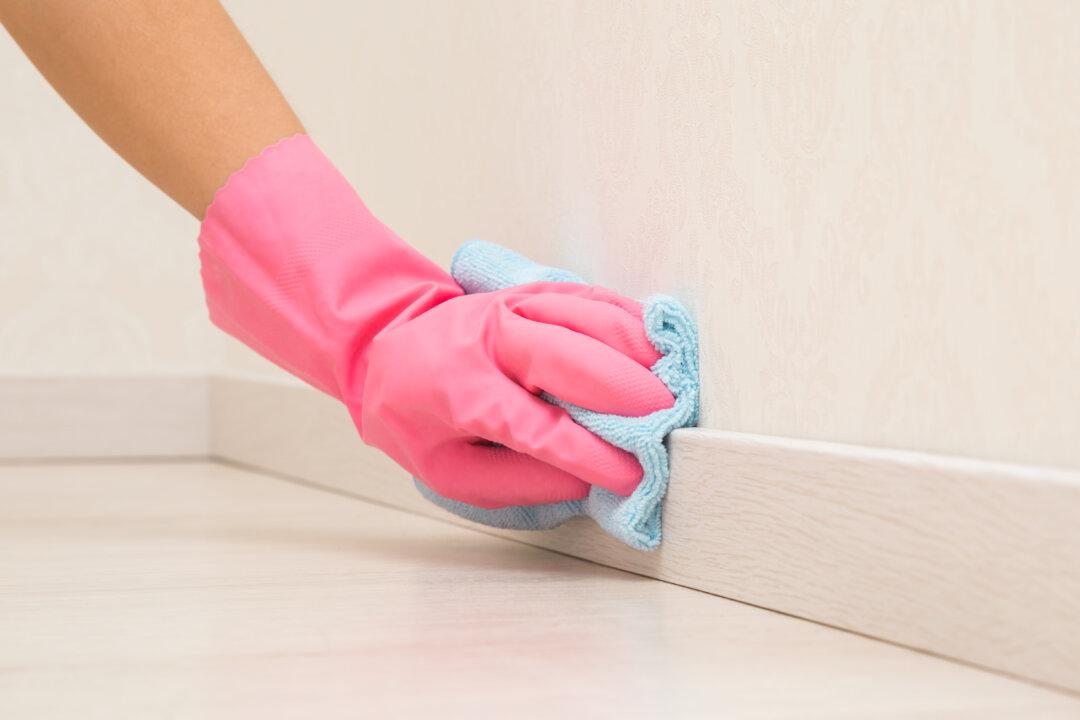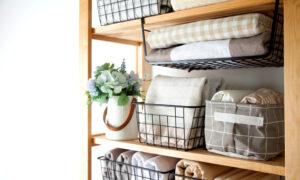Consider using a cleaning tool that doesn’t require you to bend over while cleaning the baseboards.
Cleaning baseboards is an easy job to overlook, and it has a reputation as a tedious household chore. But keeping baseboards clean of dust, hair, and splatters can greatly improve the appearance of any room. Ideally, baseboards in highly trafficked areas such as the entryway, kitchen, and bathroom should be dusted weekly, while baseboards in rooms that see less activity can be cleaned monthly.
There are two general order-of-operations rules to follow when cleaning baseboards. First, dry dust; then, if needed, damp-clean baseboards. Always clean the room first, then the baseboards, then vacuum, mop, or sweep the floors.
When it comes to the right way to clean baseboards, there are a number of good options to choose from depending on the needs of your home and your cleaning style. All of the methods detailed in this guide work, and a good way to find the one that’s best for you is simply to try them out and see which one feels best.
Think of it as the Goldilocks approach to baseboard cleaning: While vacuuming them might feel awkward for some, it may feel just right to another person.
Dust Baseboards With Microfiber
Microfiber cloths and dusters use static electricity to pick up more particles than other types of cleaning cloths, making them ideal for cleaning baseboards, where dust, hair, and other environmental soils build up. Used dry, a microfiber cloth or duster easily picks up dust; used damp, it removes splatters and scuffs.Vacuum Dust From Baseboards
Add dusting the baseboards to your vacuuming routine by making use of the machine’s attachments. Most vacuums come with a soft brush attachment that can be used for dusting hard surfaces without causing scratches. If your vacuum doesn’t include this useful attachment, one can be purchased separately.Use a Broom to Sweep Baseboards
Brooms, both short- and long-handled, can be used to sweep baseboards clean. Similarly, a (clean!) paintbrush can be used to dust and perform detail work on baseboards.Choose a Telescoping Tool for Dusting
Long-handled dusters, brooms, and wet or dry mops are the tools to reach for to clean baseboards without having to bend over. You can also DIY a telescoping dusting tool by securing a dry or damp microfiber cloth over the rushes of a broom with a rubber band.Dust With Dryer Sheets
You may have heard about using a dryer sheet to dust baseboards, and indeed, there is some science behind the hack. Dryer sheets pick up dust and hair and leave behind a thin layer of anti-static residue that will help repel dust, keeping baseboards cleaner for longer.Make a DIY Dust Cleaner
DIY dust cleaners work similarly to dryer sheets by coating baseboards with an anti-dust residue. There are variations to choose from, including a mixture of one part liquid fabric softener to five parts water, and another that combines 1 tablespoon each of cooking oil, such as olive or canola oil, and white vinegar with 1 cup of water.Degrease Kitchen Baseboards
In the kitchen, baseboards may require deeper cleaning than in other parts of the home, as food splatters and spills, as well as a sticky film from airborne cooking particles, can quickly build up. Use a degreaser to penetrate and break down the buildup from cooking.Deep Clean Entryway and Mudroom Baseboards
The baseboards in entryways and mudrooms are also likely to require deeper cleaning than in other areas of the home, as mud, dirt, and other debris is tracked in from outside. Use a solution of warm water and dish soap to wipe muddy baseboards. Melamine sponges can also be used to remove stubborn stains and scuff marks from the baseboards in an entryway or mudroom.Deep Clean Corners and Grooves
Use cotton swabs to clean tight spaces on baseboards, such as corners or grooves where dirt, dust, hair, and other debris can collect. Canned air or a power duster can help to dislodge caked-on or deeply embedded dust and dirt.Copyright 2024 Dotdash Meredith. All rights reserved. Used with permission. Distributed by Tribune Content Agency, LLC.
Dear Readers: We would love to hear from you. What topics would you like to read about? Please send your feedback and tips to [email protected]. 






